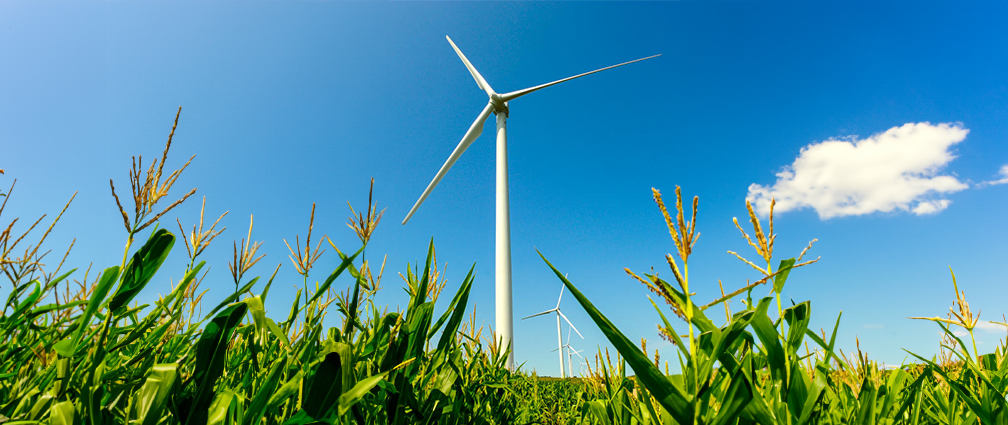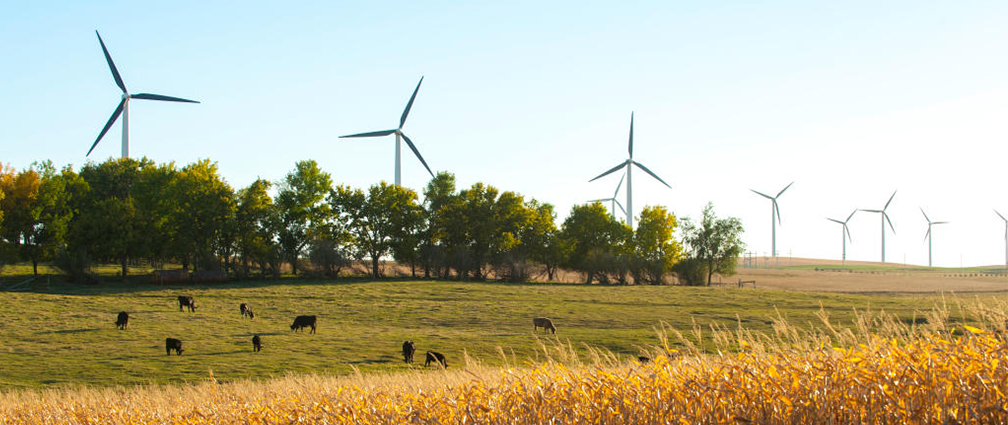
For centuries, society has combined harnessing the power of wind with agriculture. Whether it's grinding grain, moving water or powering our homes, wind and agriculture have coexisted throughout the centuries.
Why it matters: Each wind turbine uses less than one acre of land, allowing landowners to continue using their land to grow crops and raise livestock.
Diversifying income: Farmers and ranchers lease a portion of their property for wind turbines which provide a consistent source of income throughout the economic ups and downs of farming.
Preserving family farms: The increased financial stability helps family farms be passed on to the next generation.

Siting a turbine: Deciding upon the perfect location for a wind turbine is not as simple as finding an open pasture. Many factors are included in siting each turbine.
Strength of the wind.
Landowners willing to participate in a project.
Avoiding environmentally sensitive areas.
We work with landowners when siting wind turbines to minimize impacts to farming and ranching operations as much as possible.
A typical turbine site takes about a 50 x 50-foot graveled area. Farm animals can graze immediately below a wind turbine, because even at the bottom of its swing, the rotor blade is generally more than 75 feet above the ground.
We do our best to design around existing tiling and have a robust process for solving issues that may arise, even after construction.
We review the siting of all infrastructure with the landowner prior to construction to evaluate if adjustments can be made to better accommodate farming practices.
We meet or exceed all regulatory requirements and working with the community to ensure we select the most appropriate sites for generating wind energy.
Wind energy is not only compatible with agriculture - it is quickly becoming an important component of farm viability in many areas around the globe.